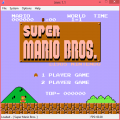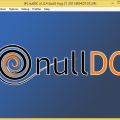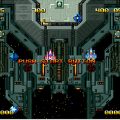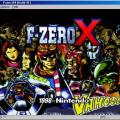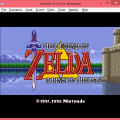- 0 replies
- 2,199 views
- Add Reply
- 0 replies
- 2,449 views
- Add Reply
- 0 replies
- 2,354 views
- Add Reply
- 0 replies
- 2,647 views
- Add Reply
2013-12-06 Recent Releases

Emu 7800 v1.6 - http://emu7800.sourceforge.net/
Bizhawk 1.5.3 - http://code.google.com/p/bizhawk/downloads/list
QEMU 1.7.0-rc2 - http://wiki.qemu.org/Index.html
Xroar 0.31.1 - http://www.6809.org.uk/xroar/
Takeda Common-source project 2013-12-05 - http://homepage3.nifty.com/takeda-toshiya/main.html
jpcsp r3419 - http://www.jpcsp.org/
WinUAE 2.7.0 - http://www.winuae.net/frames/download.html
MESSUI r26518 - http://messui.the-chronicles.org/
Ami/WinArcadia 22.22 released
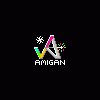
WinArcadia 22.22 (Windows): 9 December 2013
AmiArcadia 22.22 (AmigaOS 3): 9 December 2013
AmiArcadia 22.22 (MorphOS): 9 December 2013
AmiArcadia 22.21 (AmigaOS 4): 5 December 2013
Super Bug Advance 1.3 (GBA): 11 September 2009
AmiArcadia and WinArcadia are multi-emulators of these machines:
* Emerson Arcadia 2001 console family (Bandai, Emerson, Grandstand,
Intervision, Leisure-Vision, Leonardo, MPT-03, Ormatu, Palladium, Poppy,
Robdajet, Tele-Fever, Tempest, Tryom, Tunix, etc.) (1982);
* Interton VC 4000 console family (Acetronic, Fountain, Interton,
Prinztronic, Radofin, Rowtron, Voltmace, Waddington, etc.) (c. 1978);
* Elektor TV Games Computer (1979);
* PIPBUG-based machines (Electronics Australia 77up2 and 78up5, Signetics
Adaptable Board Computer, Eurocard 2650, etc.) (c. 1977-1978);
* Signetics Instructor 50 trainer (1978);
* Central Data 2650 computer (1977);
* Astro Wars, Cat and Mouse, Galaxia, and Laser Battle coin-ops by
Zaccaria (1979-1982);
* Malzak 1 and 2 coin-ops by Kitronix (c. 1980);
* Chaos 2 computer (1983);
* Dolphin trainer (1977);
* PHUNSY computer (c. 1980);
* AY-3-8550/8600-based Pong systems (c. 1976-1977);
* Ravensburger Selbstbaucomputer aka 2650 Minimal Computer trainer (1984);
and
* MIKIT 2650 trainer (1978).
Features include: ReAction GUI, load/save snapshots, windowed and full-
screen modes, CPU tracing, trainer, drag and drop support, graphics
scaling, automatic load/save of configuration/game, keyboard/joystick/
gamepad/paddle/mouse/trackball support, autofire, turbo mode, gameplay
recording/playback, PAL/NTSC modes, sprite demultiplexing, help windows,
source code, debugger, frame skipping, redefinable keys, save screenshots
(4 supported formats), ARexx port, network play (IPv4 and IPv6), real-time
monitor, locale support, game selection sidebar, text-to-speech, printer
output, undithering, support for ZIPped games, clipboard support, palette
editor, tone retuning, high score management, force feedback, sprite
editor, 3D, assembler, CALM support.
The supported languages are currently English, Dutch, French, German,
Greek, Italian, Russian and Spanish.
Changes since V22.21:
* Miscellaneous improvements and bug fixes.
http://amigan.1emu.net/releases/
http://amigan.yatho.com/
2013-11-29 Recent Releases

Virtual Jaguar 0.99x - http://www.1emulation.com/forums/topic/34940-virtual-jaguarx-v099-new-atari-jaguar-emu-update/
Wine dev 1.7.7 - http://www.winehq.org/
ThunderMAME32UI+ VER.0.143X (2013.11.24) 143u9
ThunderMAME32+ MAME32Plus!VER.0.106X (2013.11.24) - http://www.geocities.co.jp/SiliconValley-Sunnyvale/8595/
QEMU 1.7.0-rc1 - http://wiki.qemu.org/Index.html
Sweet16 3.0.2 - http://www.sheppyware.net/news/index.html
no$psx 1.7 - http://nocash.emubase.de/psx.htm
DeSmuMe 0.9.10 - http://sourceforge.net/projects/desmume/files/
GroovyMAME 0.151 - http://code.google.com/p/groovyarcade/downloads/list
Hiscore.dat 2013-11-27 - http://highscore.mameworld.info/latest.htm
Ootake 2.75 - http://www.ouma.jp/ootake/
Xroar 0.31 - http://www.6809.org.uk/dragon/xroar.shtml
EmuLoader 7.4.2 - http://emuloader.mameworld.info/
nemulator 3.2 - http://www.nemulator.com/downloads.php
SixtyForce 0.9.8 - http://sixtyforce.com/
jpcsp r3416 - http://www.jpcsp.org/
Raine 0.63.4 - http://rainemu.swishparty.co.uk/
Ami/WinArcadia 22.2 released

WinArcadia 22.2 (Windows): 26 November 2013
AmiArcadia 22.2 (AmigaOS 3): 26 November 2013
AmiArcadia 22.2 (MorphOS): 26 November 2013
AmiArcadia 22.11 (AmigaOS 4): 12 November 2013
Super Bug Advance 1.3 (GBA): 11 September 2009
AmiArcadia and WinArcadia are multi-emulators of these machines:
* Emerson Arcadia 2001 console family (Bandai, Emerson, Grandstand,
Intervision, Leisure-Vision, Leonardo, MPT-03, Ormatu, Palladium, Poppy,
Robdajet, Tele-Fever, Tempest, Tryom, Tunix, etc.) (1982);
* Interton VC 4000 console family (Acetronic, Fountain, Interton,
Prinztronic, Radofin, Rowtron, Voltmace, Waddington, etc.) (c. 1978);
* Elektor TV Games Computer (1979);
* PIPBUG-based machines (Electronics Australia 77up2 and 78up5, Signetics
Adaptable Board Computer, Eurocard 2650, etc.) (c. 1977-1978);
* Signetics Instructor 50 trainer (1978);
* Central Data 2650 computer (1977);
* Astro Wars, Cat and Mouse, Galaxia, and Laser Battle coin-ops by
Zaccaria (1979-1982);
* Malzak 1 and 2 coin-ops by Kitronix (c. 1980);
* Chaos 2 computer (1983);
* Dolphin trainer (1977);
* PHUNSY computer (c. 1980);
* AY-3-8550/8600-based Pong systems (c. 1976-1977);
* Ravensburger Selbstbaucomputer aka 2650 Minimal Computer trainer (1984);
and
* MIKIT 2650 trainer (1978).
Features include: ReAction GUI, load/save snapshots, windowed and full-
screen modes, CPU tracing, trainer, drag and drop support, graphics
scaling, automatic load/save of configuration/game, keyboard/joystick/
gamepad/paddle/mouse/trackball support, autofire, turbo mode, gameplay
recording/playback, PAL/NTSC modes, sprite demultiplexing, help windows,
source code, debugger, frame skipping, redefinable keys, save screenshots
(4 supported formats), ARexx port, network play (IPv4 and IPv6), real-time
monitor, locale support, game selection sidebar, text-to-speech, printer
output, undithering, support for ZIPped games, clipboard support, palette
editor, tone retuning, high score management, force feedback, sprite
editor, 3D, assembler, CALM support.
The supported languages are currently English, Dutch, French, German,
Greek, Italian, Russian and Spanish.
Changes since V22.11:
* Instructor 50: choice of sizes for "Tools|Controls..." subwindow.
* Miscellaneous improvements and bug fixes.
http://amigan.1emu.net/releases/
http://amigan.yatho.com/

